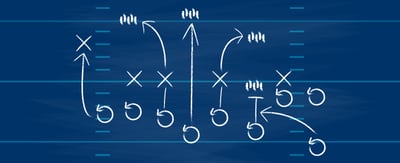
One Size Does Not Fit All: Exploring Chargeback Variants
By Chris Alarie on Jan 20, 2022
There are many discussions covering the various sources of chargebacks and the different ways to prevent chargebacks. But that variety is also reflected in the nature of chargebacks themselves and their variants.
In our Payment Industry Glossary, we define a chargeback as “a mechanism for returning payment to a customer after a disputed credit or debit card charge. Unlike a refund, a chargeback does not involve the direct communication of customer and merchant but, rather, involves communications between their respective banks (issuer and acquirer).” In most circumstances, this process begins when a customer requests that their issuing bank solicit a chargeback from the merchant’s acquiring bank. The chargeback then follows a complex path, depending on the circumstances of the transaction and request. Now that you know what happens with a normal chargeback, let’s take a look at some notable chargeback variants.
Partial Chargebacks
The majority of chargebacks involve the customer requesting that the merchant return the full amount of the transaction. However, it is not a requirement that a chargeback cover the full amount and there are some circumstances in which a partial chargeback is filed. Some examples of such are:
- The customer purchases multiple items and is only dissatisfied with some, thereby only requesting a chargeback for the portion of the transaction covering those items
- The customer only uses a portion of what they had purchased—such as two nights of a three-night hotel stay—and requests a chargeback for the unused portion
- The customer purchases a subscription based service, pays the full amount up front, and later decides not to complete the full subscription, requesting a chargeback for the unused portion
- The customer contacts customer service for a refund, receives a partial refund for the unused portion the good or service, and requests a chargeback for the remaining portion
As can be gathered from the extreme specificity, partial chargebacks are not especially common. A partial chargeback requires a customer who is satisfied enough with some portion of the purchase to accept that part of the transaction, but unsatisfied enough with the rest of the purchase to request a partial chargeback.
As rare as they may be, partial chargebacks do happen. And they require the same resources, fees, and operational costs as a normal chargeback. Depending on how a merchant maintains their records and chooses to handle chargebacks, a partial chargeback could be even more frustrating and require more special attention than a normal chargeback.
Double Chargebacks
Sometimes merchants receive chargebacks on transactions for which they have already given a refund, losing twice the original transaction amount (plus fees) in what is colloquially known as a double chargeback. These commonly happen when the merchant issues a refund, not knowing that a chargeback has already been filed.
These sorts of double chargebacks can occur because of the complex timing of the chargeback and transaction processes. A customer may file a chargeback with their issuer then contact the merchant to complain and receive a refund. Or a customer may request a refund from the merchant, receive it, and then file for a chargeback anyway. The latter circumstance is generally easier for merchants to remedy, as they can present evidence of the refund in the representment process. But the merchant still loses the revenue from the refund, must still pay operational costs, and sees their chargeback ratio increase.
Retrieval Requests
Retrieval requests are colloquially known as “soft chargebacks” or pre-chargebacks. It is a procedure whereby a cardholder or issuing bank obtains information about a particular transaction from a merchant. It often precipitates a chargeback—but not always.
The chain of communication for a retrieval request is the same as a chargeback: the customer contacts their issuing bank who contacts the merchant’s acquiring bank who contacts the merchant. The acquirer asks the merchant for information about the transaction, usually with a short deadline. Retrieval requests can sometimes present an opportunity for a merchant to avoid a chargeback by offering the customer a refund.
Bank Chargebacks
A bank chargeback is, as its name indicates, a chargeback that is initiated by an issuing bank rather than a customer. In most other ways, it functions the same as a normal, customer-initiated chargeback. The most substantial difference between normal chargebacks and bank chargebacks is bank chargebacks almost always result from suspected merchant error. Customer dissatisfaction can’t be the cause of a chargeback that a customer doesn’t initiate and an issuing bank is unlikely to commit chargeback fraud. Because bank chargebacks often result from merchant error, it is often futile to dispute them.
Next Steps
Managing and preventing normal chargebacks is a difficult enough endeavor. Doing so while also contending with these chargeback variants is significantly more difficult. These variants highlight the importance for merchants in developing robust, flexible strategies for chargeback management and prevention.


